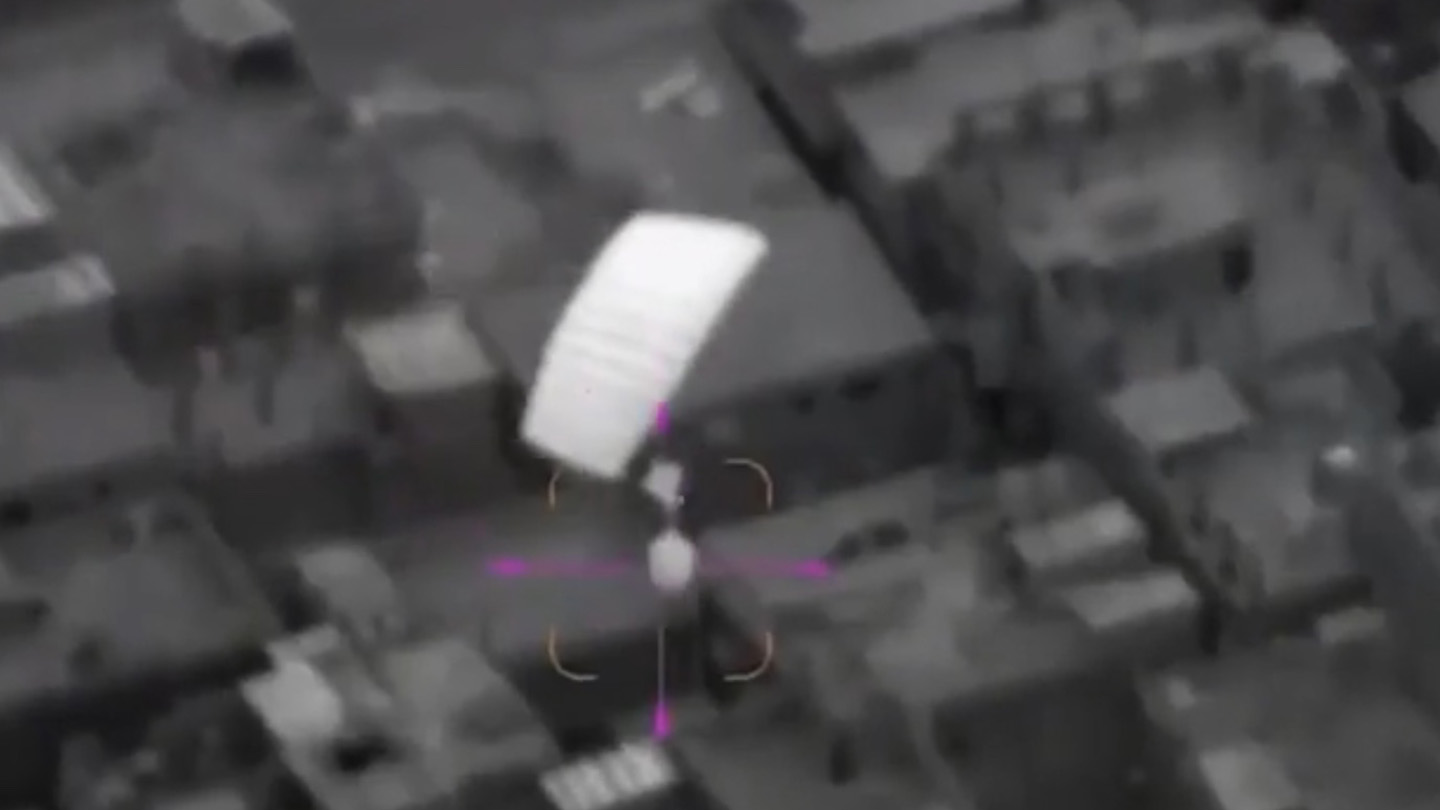The Israeli Air Force (IAF) on Monday announced the first operational use of its new “Guided Supply” parachute guidance system during combat in Gaza. The IAF said it recently used the system to conduct the first airdrop of this war, delivering about seven tons of water to hundreds of soldiers fighting in Khan Yunis. Beyond the introduction of a new system to the battlefield, the IAF’s deployment of this system highlights the challenges Israel faces keeping its troops supplied during a fierce fight in urban pockets that are difficult to access.
Guided Supply “is an advanced operational system that enables parachuting equipment to ground forces using precise navigational capabilities,” the Israeli Defense Forces (IDF) said in a media release, which does not offer further details. We don’t know if this is their version of the U.S.-made Joint Precision Airdrop System (JPADS) GPS-assisted parachute kits or a JPADS system the U.S. provided. Either way, though, it represents the IAF’s first operational use of this system.

It appears to be similar in concept to JPADS, which combines a steerable parachute with a GPS-assisted navigation system into which the coordinates of a desired drop zone are inputted prior to release.
A video posted by the IAF shows one of its C-130J Super Hercules (Shimshon, Hebrew for Samson) cargo planes of the 103rd Squadron airdropping several of these systems.

The video opens with a shot of a Shimshon in the air at night. It then cuts to a scene of three crates being released through the rear cargo ramp. They have a device on the top emitting a purple light, which would be the autonomous guidance unit (AGU).

The video then cuts to three parachutes deploying and follows one of them taking a guided track over Khan Yunis before cutting to a scene of one of the parachuting containers gradually reduce altitude as it approached awaiting troops near a building.
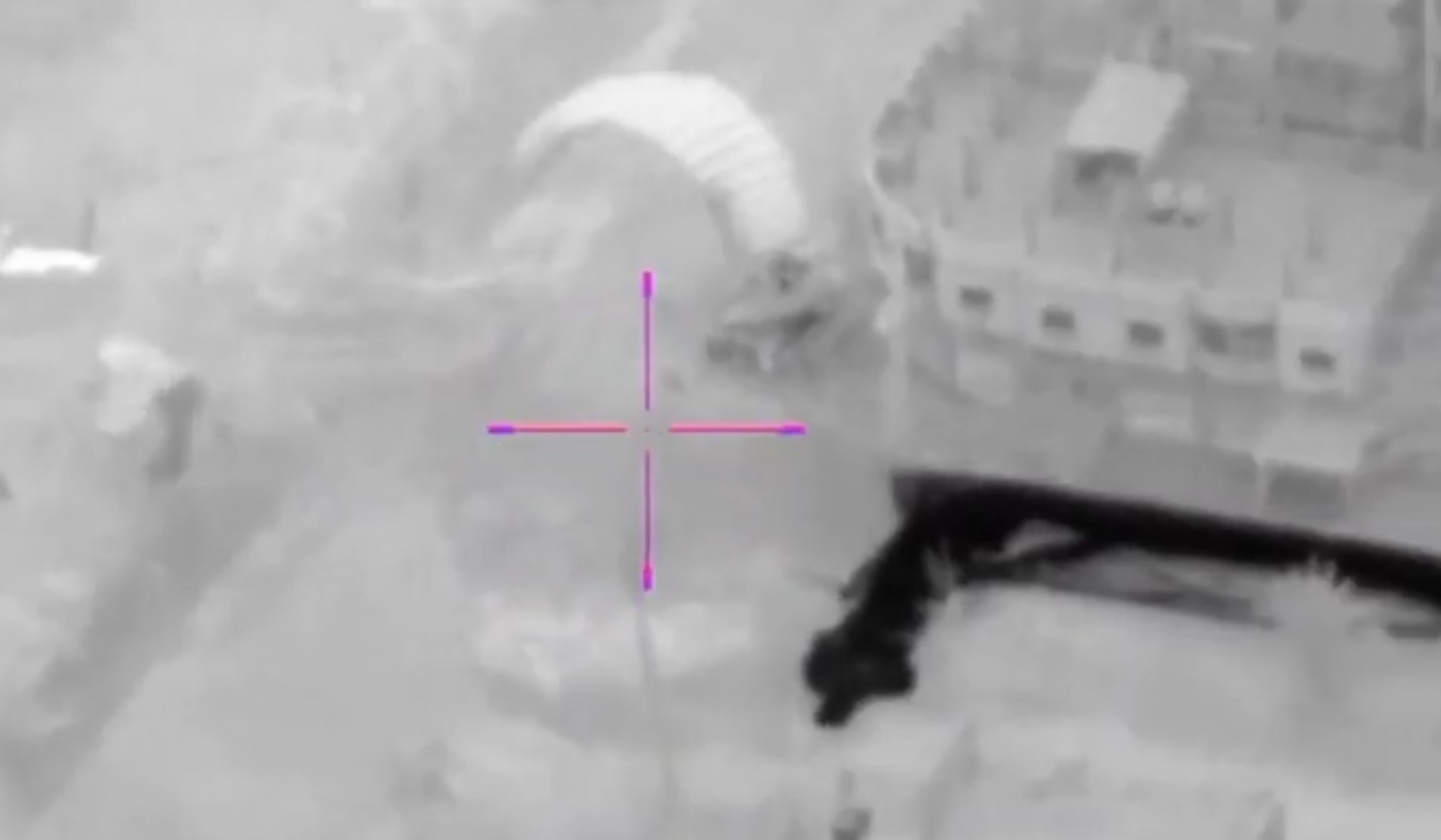
While the IDF offered scant details about the Guided Supply system, the IAF Flight Test Squadron had previously tested an unnamed guided airdrop system, the IAF said in a January 2019 media release that has since had its access restricted for undisclosed reasons. However, according to a Google cached version, in 2015, the IDF had purchased “a limited amount of such systems” for testing, with the possible procurement of additional systems in the future. The tests were conducted by the same 103 Squadron that recently used the new Guided Supply system.
The first tests were unsuccessful and the system was ultimately decommissioned, the IAF said, adding that it decided to re-examine the system after newer test results proved successful. A series of tests were conducted in late 2018 that included several nine-hour-long flights, during which a total of 18 airdrops were performed, according to the IAF.
“In the first flight, we dropped the autonomic airdrop from a great height and saw that the parachute opened and that the system directed the equipment successfully. It was amazing to see the system hit the mark on the ground,” described an Israeli logistics officer.
The system, which isn’t named, “is used in multiple militaries around the world, mainly for the goal of airdropping tactical teams alongside the equipment,” the IAF said in its release.
“The capabilities provided by the system greatly improve the airdropping transport aircraft,” said the IDF logistics officer. “The system allows us to airdrop equipment from high altitudes with the equipment directing itself to its destination. This is a significant improvement for us. The squadron will receive a huge operational advantage and include drastic changes in training, instruction and operational activity. We will prepare heavily for the system’s integration and our operational capabilities are due to improve.”
While Israel says this is its first use of the system and the first airdrop it has conducted with troops in battle since the Second Lebanon War of 2006, the Jordanian Air Force dropped supplies into al-Shifa Hospital in Gaza with the JPADS system last month.
“There are four main versions, for use with cargo weighing up to 2,000, 10,000, 30,000, and 60,000 pounds, respectively. Derivatives for use with smaller payloads have also been developed, as can be seen in the video below.”

“JPADS’ accuracy depends on a number of factors, including the altitude at which the airdrop bundle is released, how far the aircraft carrying it is from the intended drop zone, the total weight of the cargo, and environmental conditions. Broadly speaking, the core system, improvements to which have been made over the years, is reportedly routinely capable of getting the load within 50 to 75 meters (164 to 246 feet) of the programmed coordinates.”
“Airdrop bundles fitted with JPADS can be released from altitudes of up to 24,500 feet. With the help of the system, the cargo can glide along to drop zones, potentially up to 25 kilometers (around 15 and a half miles) away, depending on the release envelope and other factors, according to the U.S. Army. Those altitude and glide capabilities can also help keep airlifters further away from enemy defenses and potentially help reduce the chances of the drop, or its intended recipients, being detected.”
Aside from this being the first use of “Guided Supply,” the reason it was deployed is also notable. Fighting for the past week in Khan Yunis, the second largest city in Gaza, the IDF indicated the need to find alternatives to supplying its troops in Khan Yunis via ground transport.
“We parachuted supplies to the division’s commando soldiers,” an officer with the IDF’s 98th Division said in a video statement. “Part of what makes the 98th Division unique is their ability to send supplies to forces when sending supplies over land is not possible.”

The IDF did not elaborate on why it could not deliver supplies by land. However, Khan Yunis, the largest city in southern Gaza, sits roughly in the middle of the widest part of Gaza, about eight miles from the Mediterranean Sea to the Israeli border.
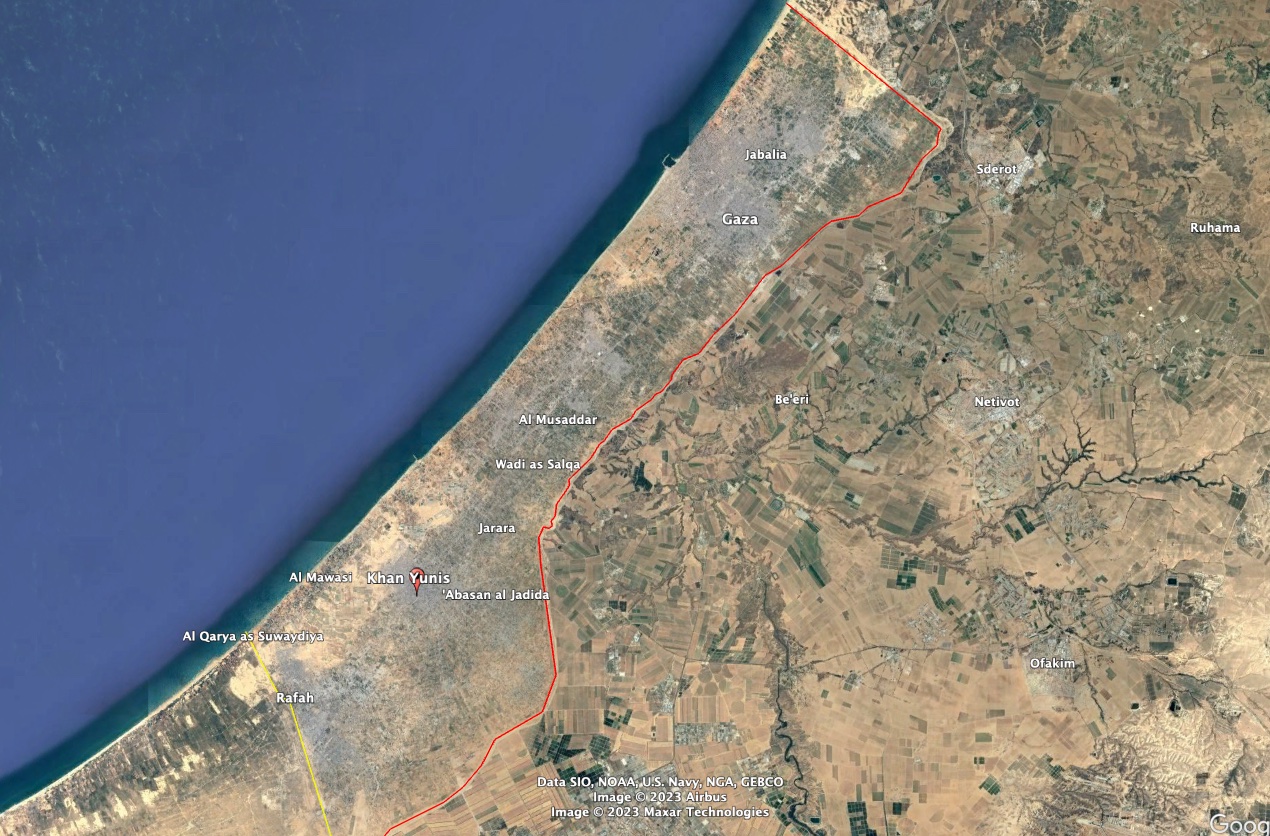
Given the dense urban terrain, it is virtually inaccessible directly from Israel’s border with the strip and supply lines by road from the north, where Israel has been operating in large numbers, and the beach and sea to the west, are limited. Israel’s push south, bypassing much of the area between Khan Yunis and Northern Gaza was somewhat surprising to some, especially in terms of the risk taken in operating in a hard to access, highly contested area where resupply would be more challenging.
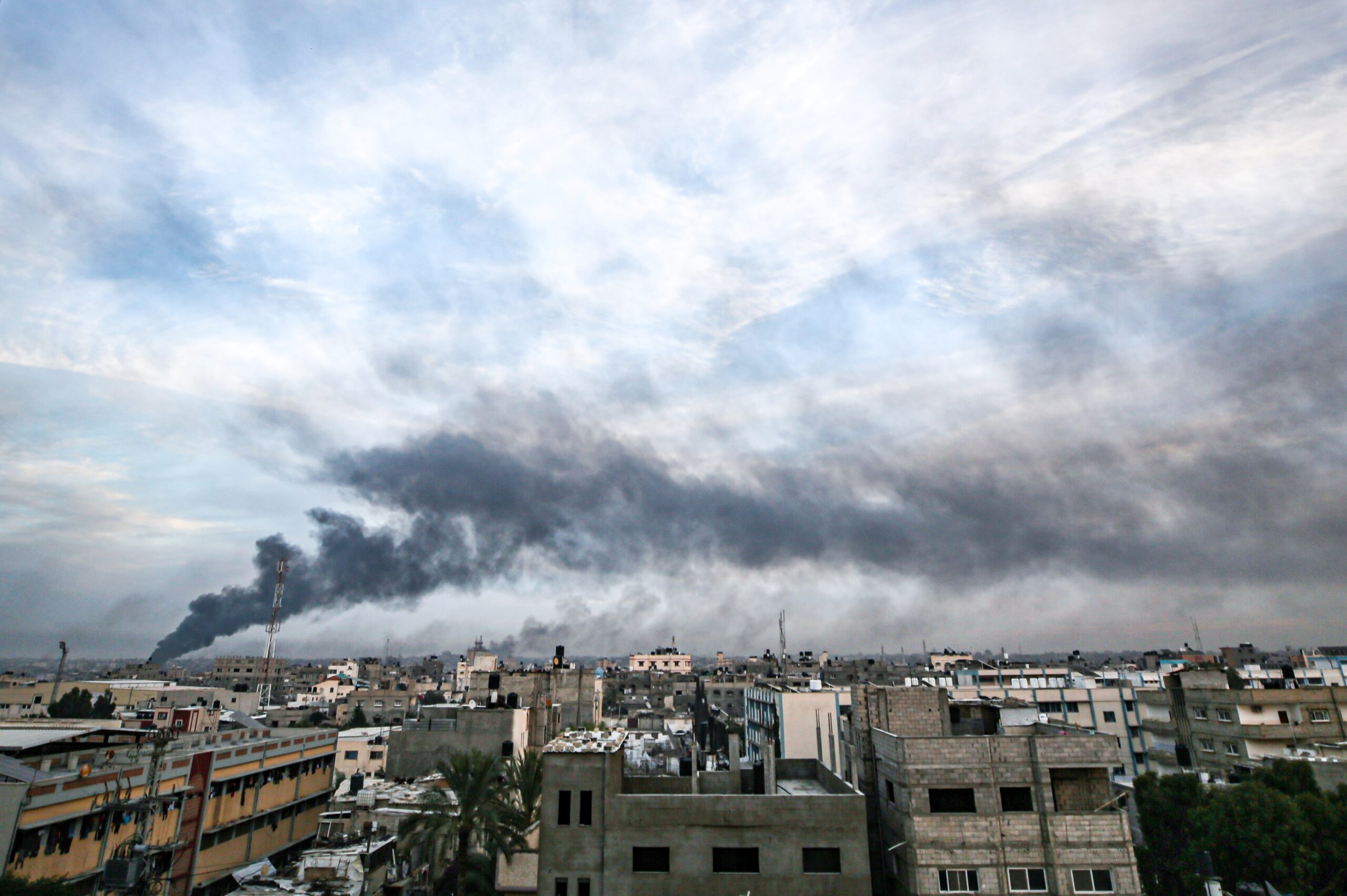
Airdropping supplies has always been a mission fraught with the possibility that much of the materiel does not get where it is needed for several reasons. Airdrops landing in the wrong spot and falling into the wrong hands is one long-running concern about aerial resupply. Loads landing far off course and ending up missing or damaged beyond use are additional worries.
Those are even bigger concerns in a fight like the one in Khan Yunis where drop zones are located in very small areas, with large structures blocking the aerial approaches to the limited number of open spaces. All these factors are in place along with dug-in enemy fighters also desperate for supplies. As such, the use of a guided parachute resupply system makes a lot of sense.
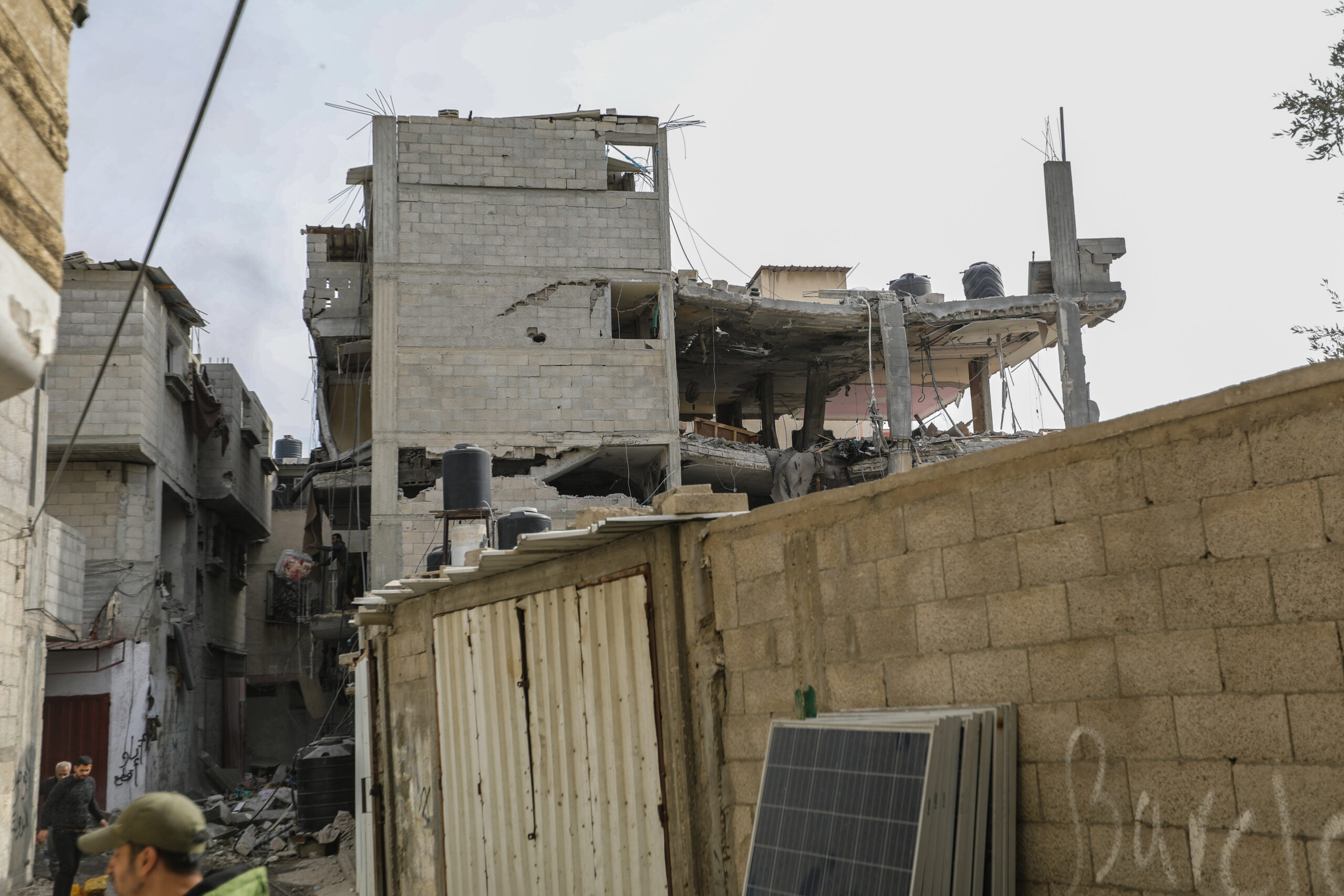
How much this enables the IDF to sustain its fight remains to be seen.
Contact the author: howard@thewarzone.com
